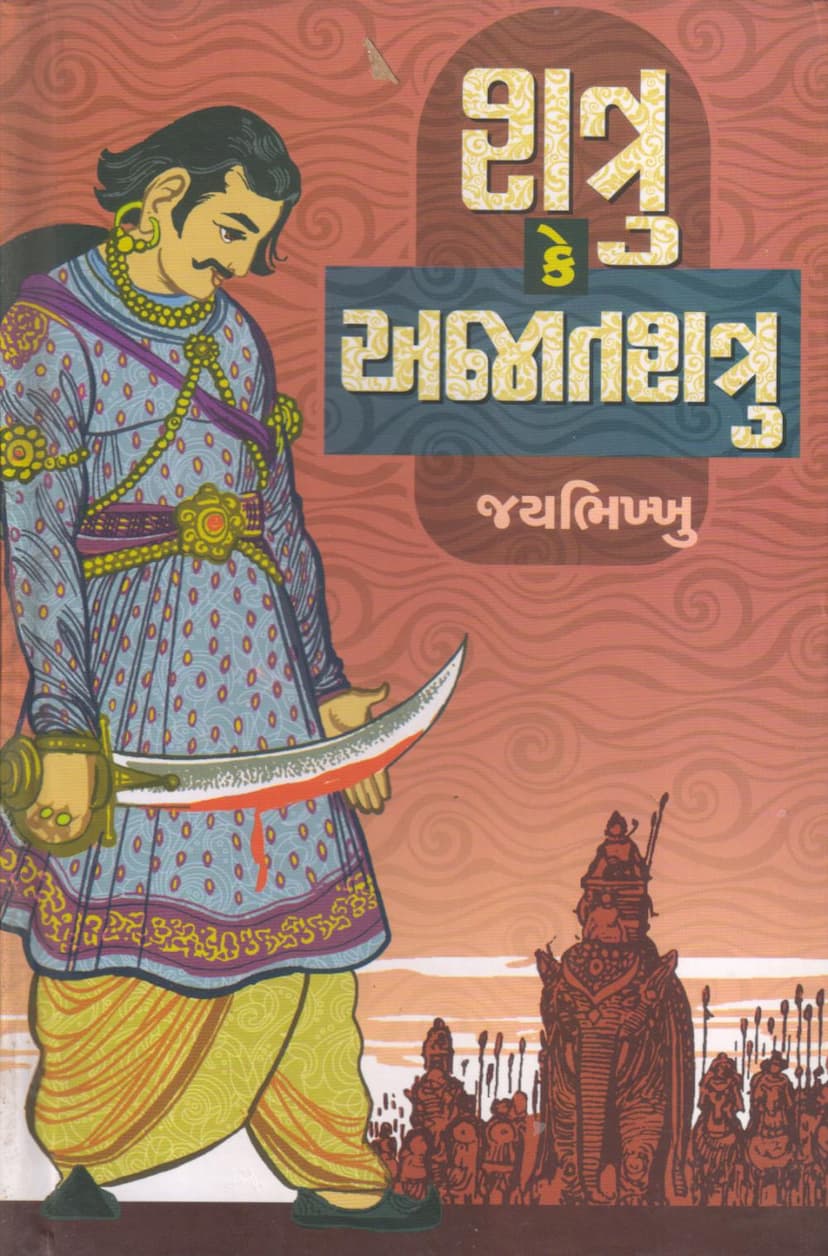Shatru Ke Ajat Shatru
Added to library: September 2, 2025

Summary
Here's a comprehensive summary of the Jain text "Shatru ke Ajat Shatru" by Jaibhikkhu, based on the provided information:
Book Title: Shatru ke Ajat Shatru (The Unvanquished Ajatashatru) Author: Jaibhikkhu Publisher: Shri Jaybhikkhu Sahitya Trust, Ahmedabad
Overall Summary:
"Shatru ke Ajat Shatru" is a historical novel in Gujarati by Jaibhikkhu, published by Shri Jaybhikkhu Sahitya Trust. The novel, while rooted in history, delves into themes that resonate with contemporary times, primarily exploring the conflict between republicanism (Ganasasan) and monarchy (Rajyashasan). Set in ancient India, around the 6th century BCE, the story focuses on the political and social landscape of the time, highlighting the strengths and weaknesses of different political systems.
Key Themes and Content:
-
The Conflict Between Republics and Monarchy: The central theme is the clash between the democratic ideals of Ganasasan (republican rule), as exemplified by states like Vaisali, Shakya, and Lichhavi, and the expansionist, monarchical ambitions of Magadha, led by King Ajatashatru. The novel portrays how the unity and discipline of republics are their strength, and how internal discord, luxury, and weakening resolve can make them vulnerable to aggressive monarchies.
-
Historical Setting and Jain Influence: The novel utilizes historical details while incorporating material about Bimbisara and Ajatashatru found in Jain literature. It depicts the political dynamics of the 16 Mahajanapadas (major kingdoms) of ancient India, providing brief descriptions of their geographical locations and characteristics. This historical backdrop serves to contextualize the narrative of political conflict.
-
Vaisali and the Republics: The text places significant emphasis on Vaisali, describing its republican system. Vaisali is depicted as a powerful and influential republic formed by the union of eight distinct powerful tribal clans, with Videha and Lichhavi being prominent. The narrative highlights the values of independent thought, collective strength, and unity that characterized these republics. The text also mentions the strict rules and democratic functioning of Vaisali's assembly (Santhagar), where elders and representatives gathered to conduct state affairs.
-
Ajatashatru's Ambition and Strategy: The novel portrays Ajatashatru, the king of Magadha, as the antagonist driven by imperialistic ambition. It details his strategy to conquer the republics, noting that their strength lay in their unity. Recognizing this, Ajatashatru planned to exploit their internal weaknesses by fostering disunity, encouraging indulgence, and using spies to create discord and bribery. The text highlights the effectiveness of his manipulative policies in weakening the republics.
-
The Role of Morality and Human Nature: The novel explores the inherent strengths and weaknesses of human nature within the context of political power. It shows how internal decay, like complacency, luxury, and infighting, can lead to the downfall of even the most powerful republics. The narrative suggests that while republics rely on unity, their downfall often stems from the erosion of moral values and a loss of collective purpose.
-
Jaybhikkhu's Literary Legacy (as highlighted in the publisher's notes): The introductory and concluding remarks from Shri Jaybhikkhu Sahitya Trust shed light on the author's broader contributions. Jaybhikkhu is celebrated as a prolific writer who infused his works with values of life and humanity. His approach was to distill the essence of religious teachings (Jainism, Buddhism, and even other faiths like Islam and Vaishnavism) into universal messages of humanity, making his literature accessible and impactful across different traditions. His writings are characterized by vivid imagination, skillful character portrayal, and a narrative style that appeals to all age groups.
-
Specific Chapters/Themes Mentioned: The table of contents and chapter titles reveal a narrative that explores various facets of palace intrigue, royal suffering, political maneuvering, and the human condition, seen through the lens of characters like Queen Sukhi, King Dukhhi, the monk involved in politics, and the internal struggles of characters like Ajatashatru and his family. The specific focus on "Rathmusal Yantra" and "Mahashilakantak Yantra" suggests the novel also delves into military technology and its role in warfare.
In essence, "Shatru ke Ajat Shatru" serves as a historical narrative that uses the conflict between Magadha and the Vaisali republic to explore timeless themes of political power, the fragility of republics, the corrupting influence of luxury, and the enduring importance of unity and moral integrity in the face of external threats and internal decay. It also highlights the author Jaibhikkhu's commitment to weaving universal humanistic values into his literary works.